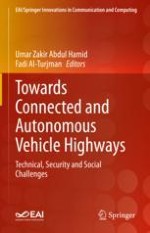This book combines comprehensive multi-angle discussions on fully connected and automated vehicle highway implementation. It covers the current progress of the works towards autonomous vehicle highway development, which encompasses the discussion on the technical, social, and policy as well as security aspects of Connected and Autonomous Vehicles (CAV) topics.
This, in return, will be beneficial to a vast amount of readers who are interested in the topics of CAV, Automated Highway and Smart City, among many others. Topics include, but are not limited to, Autonomous Vehicle in the Smart City, Automated Highway, Smart-Cities Transportation, Mobility as a Service, Intelligent Transportation Systems, Data Management of Connected and Autonomous Vehicle, Autonomous Trucks, and Autonomous Freight Transportation.
Brings together contributions discussing the latest research in full automated highway implementation;Discusses topics such as autonomous vehicles, intelligent transportation systems, and smart highways;Features contributions from researchers, academics, and professionals from a broad perspective.
